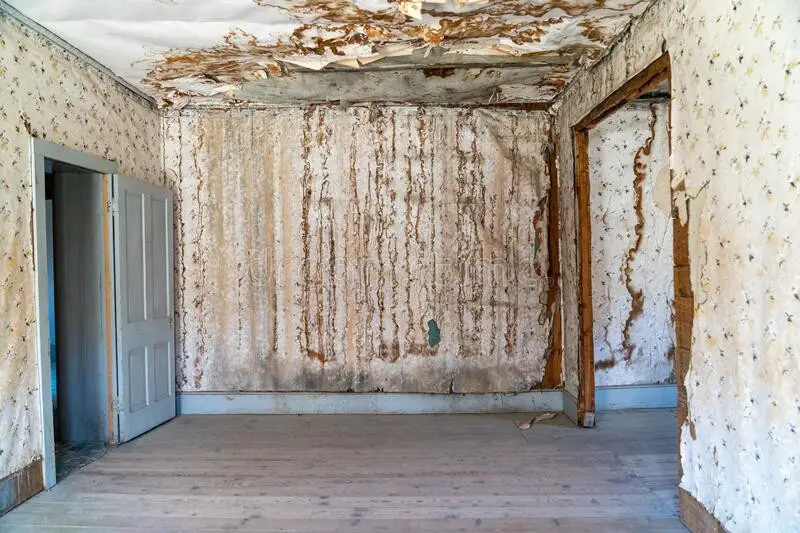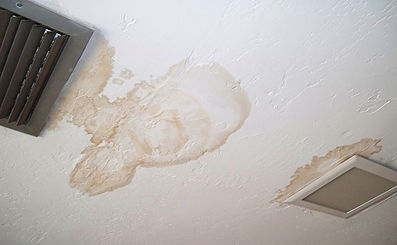Solving Water Stains on Walls: Assessments and Repairs Instructions
Solving Water Stains on Walls: Assessments and Repairs Instructions
Blog Article
How do you actually feel with regards to How to Find and Repair Water Leaking in the Wall?

Water discolorations on wall surfaces are not pleasant to the eyes. Sometimes it appears practically unpreventable to experience water discolorations on walls in homes.
Home owners living in damp regions constantly deal with the anxiety of water discolorations on walls. With accurate and also all-round information on the reasons of water spots and prompt repair procedures, you will always be a step in advance of such events.
3 Typical Reasons For Water Stains on Walls
Unlike common belief, water spots on walls do not constantly originate from bad building materials. There are numerous causes of water spots on wall surfaces. These consist of:
Moist
When hot moist air meets completely dry cold air, it creates water droplets to base on the walls of buildings. This happens in bathroom and kitchens when there is steam from food preparation or showers. The water beads can stain the bordering walls in these parts of your home as well as infect other locations.
Moist or condensation influences the roofing system as well as wall surfaces of buildings. This creates them to appear darker than other locations of the home. When the wall surface is wet, it develops an ideal atmosphere for the development of fungis as well as germs. These may have negative results on health, such as allergies as well as respiratory system disorders.
Poor Drain
This will avoid water from leaking right into the walls. This links to excessive wetness that you notice on the wall surfaces of your structure.
So, the leading source of damp walls, in this situation, can be a bad drain system. It can likewise be due to inadequate monitoring of sewer pipelines that go through the building.
Pipe Leaks
Many homes have a network of water pipelines within the wall surfaces. It always increases the viability of such pipes, as there is little oxygen within the wall surfaces.
Yet, a disadvantage to this is that water leakage affects the wall surfaces of the structure as well as causes prevalent damages. An indicator of damaged pipes is the appearance of a water tarnish on the wall.
Pro Tip
A houseplant in your house also raises its moisture. If the home is already moist, you may desire to present houseplants with minimal transpiration. An instance of suitable houseplants is succulents.
Water Discolorations on Wall: Fixing Tips
House owners would generally desire a quick fix when handling water stains. They would quickly realize this is disadvantageous as the water stains reoccur. So, here are a couple of helpful tips that will lead you in the repair of water spots on wall surfaces:
Conclusion
No one wants to have water discolorations on wall surfaces in their residence, it can take place to the ideal of us. This article gives you leverage, as you now understand just how to manage this incident if it does happen.
It is always best to recruit professional services to help fix the problems in your home.
In some cases it appears virtually unpreventable to experience water discolorations on wall surfaces in homes.
In contrast to popular idea, water discolorations on wall surfaces do not constantly stem from bad building materials. There are several reasons of water discolorations on wall surfaces. The water beads can stain the surrounding wall surfaces in these components of your house and spread to various other locations.
Here are a couple of handy pointers that will certainly direct you in the repair work of water stains on wall surfaces:
What To Do About A Water Stain On The Ceiling
Why This is Important
Not only are water stains a cosmetic issue, but they can also indicate that there is a leak in the home that needs to be fixed. Sometimes, this may be the first indicator of a bigger problem brewing or may have been a one time leaky issue. It is important to investigate to make sure it is under control before you possibly have thousands of dollars in repairs.
Identify the Cause of the Water Stain on the Ceiling and Where to Start
It is important to identify the cause of the water stain on the ceiling first so you can fix it. Start first with the roof to see if there are leaky shingles or missing shingles, missing flashing, or weakened seals around roof vents. You may need to get on top of the roof to look or call a professional to check for you. It is possible that water is coming into the home from the roof. So you will want to have the professional take a look to see if this is the issue.
Also, look in the attic to see if there is a pool of water and that will also help you to know if there is water leaking into the home.
Radiator or Air Handler on 2nd floor
In colder parts of the country, there may be a radiator on the second floor. Radiators are used to keep rooms warm in the cold months and do wear out or need replacing. Does the radiator have a pool of water underneath it or any dripping? If yes, this could be the problem and causing the water stain on the ceiling. Check the model of the radiator and see if it is something you can do yourself or call a professional to check the body, pipe, and the valve for leaks.
The same is true for those who have an air handler on the second floor. Did your AC stop working? Or do you see water leaking? The drip pan (if you have one) on an HVAC unit collects the water and it can become clogged and back up. The float switch (again, if you have one) will activate as soon as the water reaches a certain level and shut down the HVAC unit, thus not allowing the water to continue to flow. Make sure the HVAC doesn’t become clogged and checking this monthly is a good idea.
Upstairs Bathroom Can Cause a Water Stain on the Ceiling
Bathrooms are often the culprit as caulking wears out after about 10 years and needs replacing. Is the home older than 10 years? This may be the issue. While checking the caulking in the bathroom around the sinks, toilets, and shower/bath, also check for black mold in the shower. Might as well rule everything out while you are looking for the source.
Other areas to look at are toilets clogging and overflowing. Do you see water near the toilet on the floor? This could be the seal is broken on the toilet and it needs replacing. Also, adding caulk to the toilet to connect it to the floor is a good idea. If the toilet is continuously running, you can shut off the water and do the water meter test.
Write down the number on the water meter and then turn off the water for three hours. When you turn it back on, check the number on the water meter. If it has increased, then you have a leak in the indoor plumbing.
Taking care of these areas is essential as sewer gases can also be escaping. Sometimes these issues will soak the ceiling below and clog in sinks and drains in the shower can also cause flooding in a bathroom.
Put a Drop Cloth on the Floor
With goggles on and gloves, put a drop cloth on the floor. Then, take 3 glasses of warm water and one cup of bleach and mix it together. Set up a ladder and climb up to the stain. Use a sponge that is soaked in the concoction to rub it on the water stain to get it to come off. Take a spray bottle of plain water and spray the stain to get the bleach mixture off. This is important because you want to be able to prime it and paint it. Take a dry towel and rub the stain to help it dry faster. Next, put painters tape around the ceiling if the spot is near the walls. Apply an Oil Based, Stain Blocking Primer
Apply an oil based, stain blocking primer that is mold resistant that matches the ceiling. It is important to put the primer on first so the paint doesn’t soak into the ceiling. If you have a flat ceiling, you can use a paint roller with an extension to apply it. Once the primer has dried, apply the paint. If you have a textured ceiling, a spray on primer might work better.
Choose a Latex or Alkyd Ceiling Paint
The latex ceiling paint is water-based and dries faster than the oil-based paints and also is thicker than wall paint. Make sure that the paint matches the ceiling color. Using a roller, paint it on over the primer and let it dry for up to four hours. Then, apply a second coat and let it dry. The second coat should make the stain disappear.
https://insideandoutpropertyinspectors.com/water-stain-on-ceiling/

I stumbled upon that entry on How to Remove Water Stains from Walls and Ceilings when doing a search on the search engines. In case you appreciated our blog entry kindly don't forget to share it. Thanks for going through it.
Plumbing challenges? Professional solutions await. Report this page